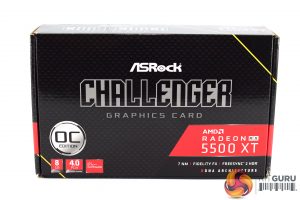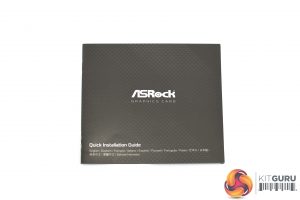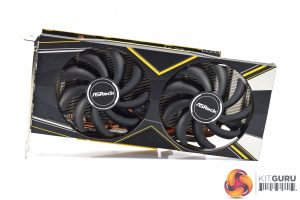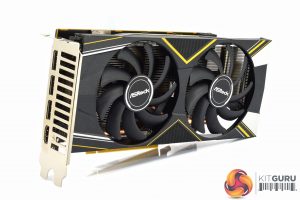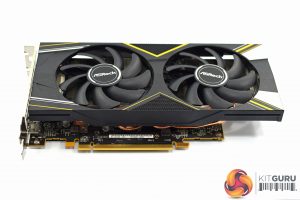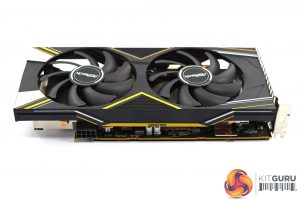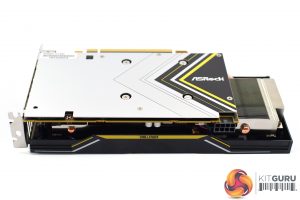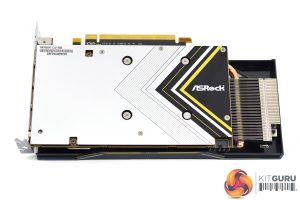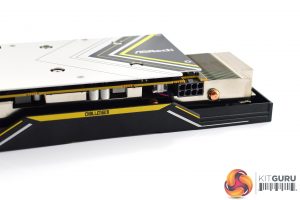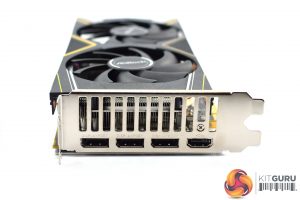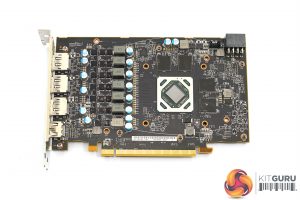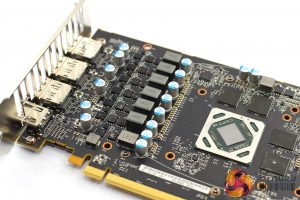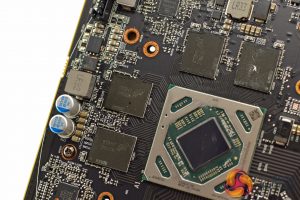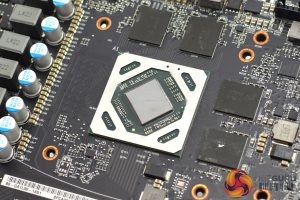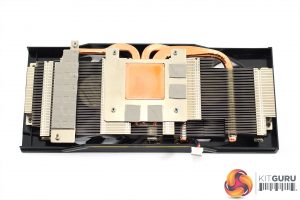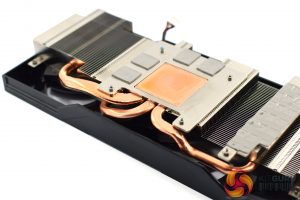The ASRock RX 5500 XT Challenger 8GB ships in a black box, with the AMD Radeon and Challenger logos taking pride of place on the front.
Inside, the only accessory is a small quick installation guide.
Getting a look at the card itself, ASRock is using a black, silver and yellow colour scheme for the Challenger's plastic shroud. Being honest, I don't think it is the best looking card I have ever seen, but of course that is subjective. The shroud itself is quite flat and simple, so it's not an aggressive ‘gamer' look, it just looks a bit plain to my eye.
Still, we can see it's a dual-slot card with a dual-fan cooler – each fan measures 90mm.
I don't have official measurements for the Challenger, so I did my best to take them myself: 228mm x 110mm x 40mm. Official measurements on ASRock's website will likely differ slightly, but this should give you an idea of whether or not this card will fit in your chassis.
On the front side of the card, we can see a small yellow strip with ‘Challenger' written in tiny black text. We can also get a look at the metal backplate, which is mostly silver with some yellow and black sections too. This only covers the length of the PCB, so there's almost 5cm of space where the heatsink and shroud extend beyond the PCB.
The Challenger 8GB requires 1x 8-pin PCIe power connector, while we see display outputs consist of 3x DisplayPorts and 1x HDMI.
Taking off the cooler to look at the PCB, this is almost identical to the Sapphire Pulse we have also reviewed today, so it is highly likely both companies are using reference boards. That means the Challenger also has a 6-phase VRM for the GPU, while the memory VRM consists of a single-phase.
As for that GDDR6 memory, here things get interesting as this is an 8GB 5500 XT – but there's only four physical memory modules. It seems AMD is using double-density memory for the 5500 XT 8GB cards, so it's a 4x2GB configuration. Every other current-generation card I've seen that uses GDDR6 memory has used 1GB modules, so perhaps this will become more prevalent in the coming months. The fact that the ‘9TB47D9WZX' code does not show up on Micron's website, suggests this is a very recent development for its GDDR6 production.
As for the heatsink, this uses a single finstack with three copper heatpipes. The GPU die contacts with a central copper plate, and this is surrounded by another plate for the VRAM. One final plate for the VRM is also off to the side.
Be sure to check out our sponsors store EKWB here
 KitGuru KitGuru.net – Tech News | Hardware News | Hardware Reviews | IOS | Mobile | Gaming | Graphics Cards
KitGuru KitGuru.net – Tech News | Hardware News | Hardware Reviews | IOS | Mobile | Gaming | Graphics Cards


